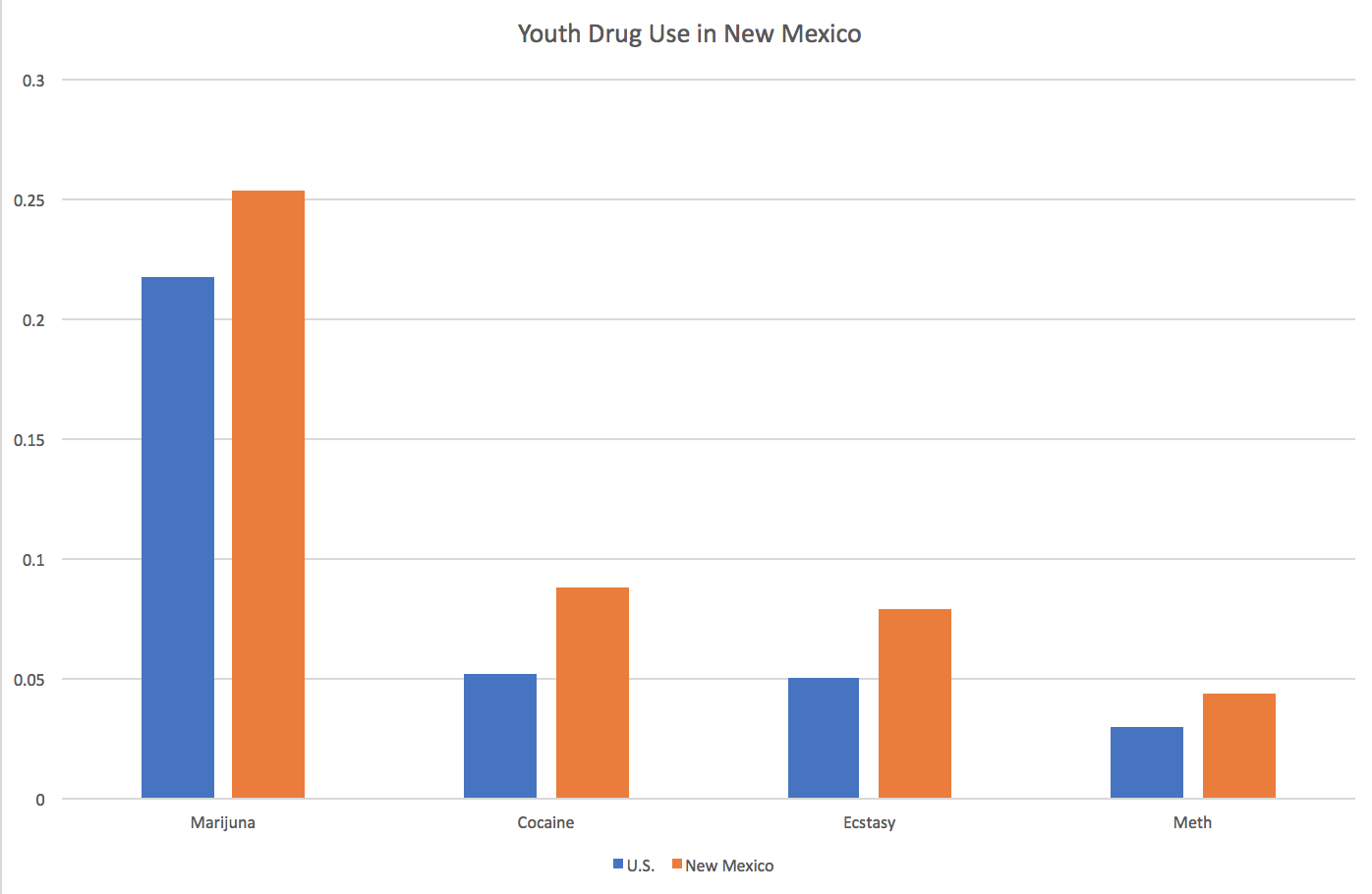“It’s insane what’s right in front of our faces if we just look,” said Bobbie Waller, a former drug addict who grew up in Carlsbad, New Mexico. “So many people pass away alone on the streets without any help.”
Waller speaks from her own experience in dealing with drug addiction as a youth in New Mexico.
In 2015, New Mexico had the eighth highest drug overdose death rate in the nation, according to the 2017 New Mexico Substance Abuse Epidemiology Profile. The information is based on emergency room data.
“Drugs are more accessible than they ever been and high school and middle school kids are starting to experiment at younger ages,” said Jennifer Weiss-Burke, Executive Director of Healing Addiction in Our Community.
Weiss-Burke says finding ways to intercept drug use by young adults is a big concern and not easy to do.
“I think that when they are under the age of 18, it’s harder to get them into rehab unless they have criminal charges,” Weiss-Burke said.
The challenges include a lack of programs, their cost, and if the young people refuse to go.
“When you’re looking at high school kids, getting them to go to treatment, it’s just hard in general because they don’t want to give up their friends,” Weiss-Burke said.

Weiss-Burke says youths do not want to put their life on hold, leave school and friends, to go and obtain treatment.
Bobbie Waller says addiction runs in her family.
“I don’t know if it’s scientifically proven, but I feel like psychologically, when you see people your whole life struggle with addiction it seems somewhat normal and you are more inclined to follow down the same path,” Waller said.
Waller says she began experimenting with drugs when she was 13 years old.
“Once I was 18, all bets were off. I tried ecstasy, mushrooms, pretty much every pill, Xanax, morphine, Suboxone,” Waller said. “I tried those CO2 canisters, cocaine.”
Waller says one of her biggest problems when trying to obtain help for her addiction is the cost of treatment.
“I need help. I know I do,” Waller said. “But when you are poor and you have kids to take care of, finding time to get help or finding the funds to get good help is nearly impossible.”
While some insurance companies do cover the cost of rehabilitation, others do not.
“It’s cheaper to have an addiction than it is to get help for whatever is wrong with you and turned you to addiction in the first place,” Waller said.
When it comes to finding a way to improve the treatment of addiction aimed towards youth, Weiss-Burke says she would like to see better treatment options in schools.
“I think if there were treatment available in the school, something where they could continue to live a normal life,it might go a long way in helping kids where they are and when they need it,” Weiss-Burke said.
Follow Oma, Andrea and Maelene on Twitter